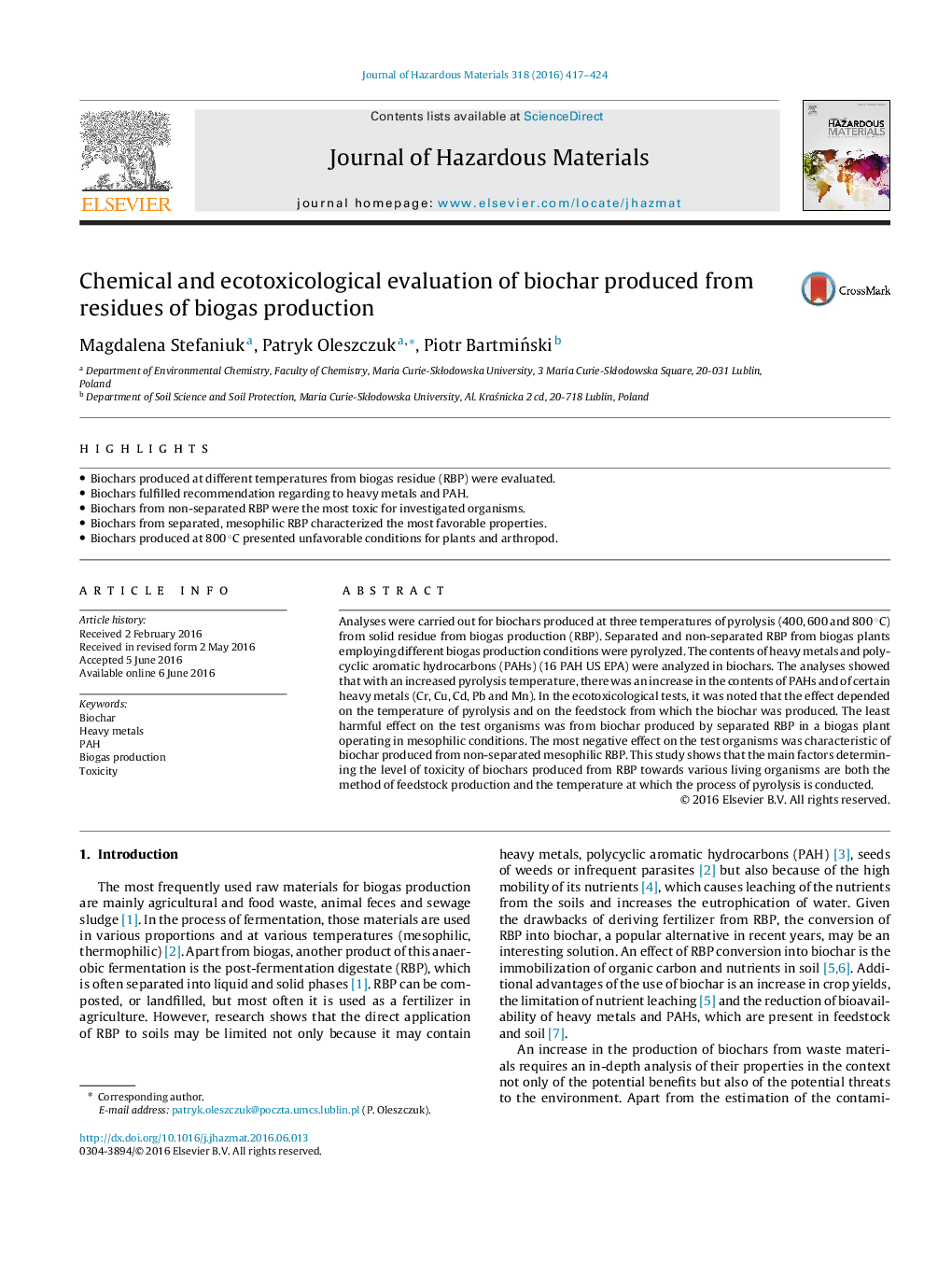| Article ID | Journal | Published Year | Pages | File Type |
|---|---|---|---|---|
| 6970073 | Journal of Hazardous Materials | 2016 | 8 Pages |
Abstract
Analyses were carried out for biochars produced at three temperatures of pyrolysis (400, 600 and 800 °C) from solid residue from biogas production (RBP). Separated and non-separated RBP from biogas plants employing different biogas production conditions were pyrolyzed. The contents of heavy metals and polycyclic aromatic hydrocarbons (PAHs) (16 PAH US EPA) were analyzed in biochars. The analyses showed that with an increased pyrolysis temperature, there was an increase in the contents of PAHs and of certain heavy metals (Cr, Cu, Cd, Pb and Mn). In the ecotoxicological tests, it was noted that the effect depended on the temperature of pyrolysis and on the feedstock from which the biochar was produced. The least harmful effect on the test organisms was from biochar produced by separated RBP in a biogas plant operating in mesophilic conditions. The most negative effect on the test organisms was characteristic of biochar produced from non-separated mesophilic RBP. This study shows that the main factors determining the level of toxicity of biochars produced from RBP towards various living organisms are both the method of feedstock production and the temperature at which the process of pyrolysis is conducted.
Related Topics
Physical Sciences and Engineering
Chemical Engineering
Chemical Health and Safety
Authors
Magdalena Stefaniuk, Patryk Oleszczuk, Piotr BartmiÅski,
